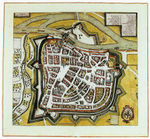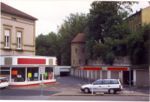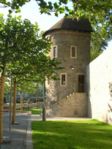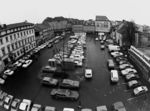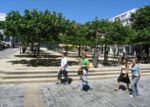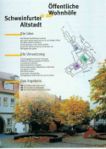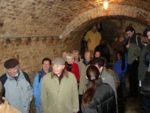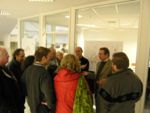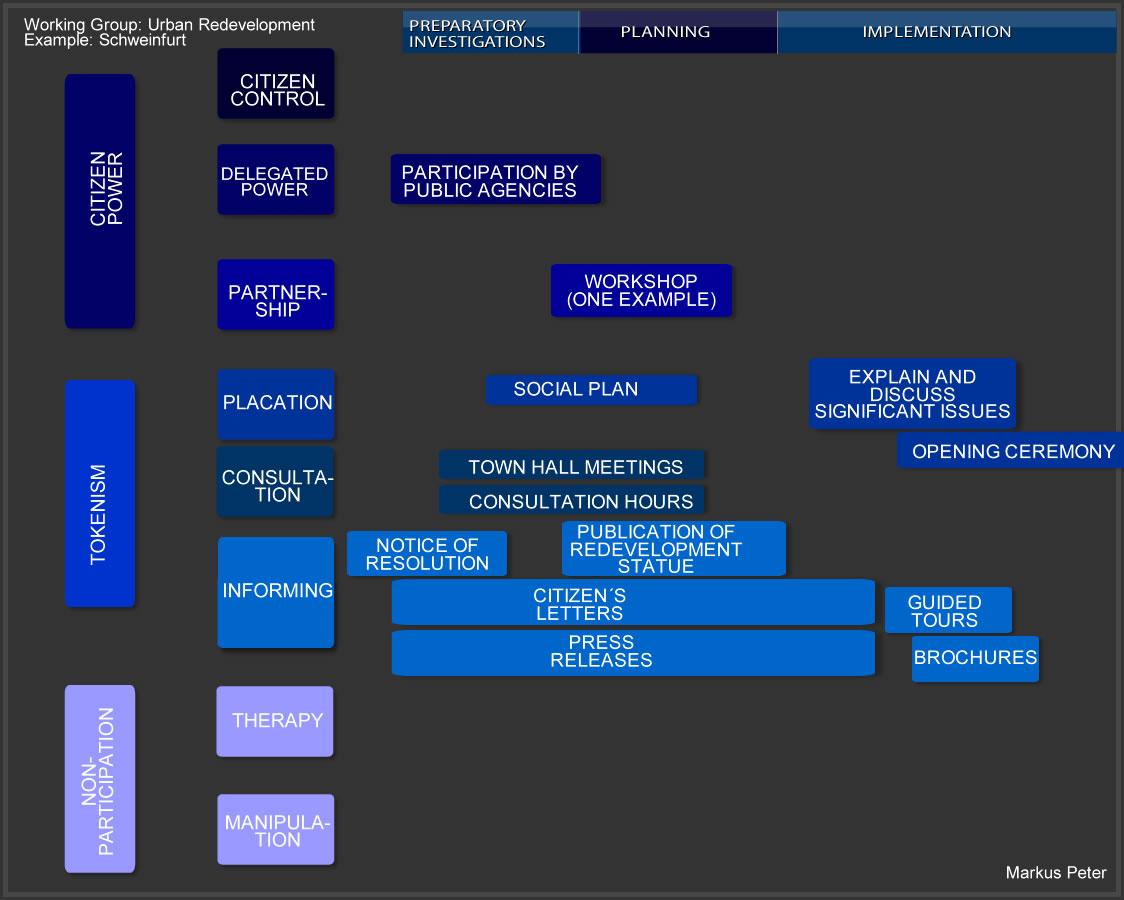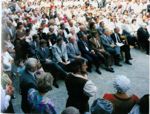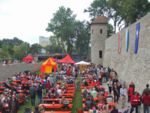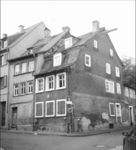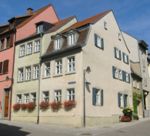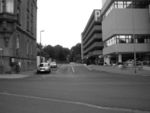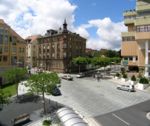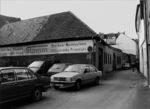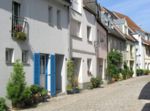Old Town Rehabilitation in Schweinfurt, Germany
back to Project Biography List
| Name | Urban Redevelopment | |
| Place | Schweinfurt | |
| Country | Germany | |
| Author(s) | Markus Peter | |
| Completion | Start 1971 - still in progress | |
| Client | City of Schweinfurt | |
| Project costs | 50 Mio EUR (until 2000) | |

| ||
Rationale: Why is this case interesting? [1]
The Old Town Rehabilitation in Schweinfurt is an example of the improvement of direct living conditions within an old townas a co-operation of architecture, landscape-architecture, traffic and urban planning. The former town fortification and the appearance of the houses are being reconstructed while having the historic appearance in mind. The historic system of streets, alleys and places particularly within the old town of Schweinfurt remains mostly preserved. It shows also a recreation of a historic quarter which is embedded into the history of the old town and therefore within the whole city.
The main aims of the redevelopmentare:
- Improving the residential environment
- Creating of new dwellings
- Improvement of city- and streetscape
- Strengthening of the attraction and revitalization of the historic city
These aims are being realized through a bunch of measures like:
- Rearrangement of the floating traffic through establishment of pedestrian areas and trafficable calmed areas and the building of a central parking house
- Shifting of inconvenient business enterprises
- Modernization of buildings particularly to create modern living space
- Restoration of historical monuments
- New buildings in order to close building gaps
- Redesign and creating of public open space
Author's personal background
Markus Peter studied landscape architecture at the University of Applied Science Freising-Weihenstephan after training as a landscape gardener. He is a practicing landscape architect at the green space department of the municipality of Schweinfurt.
Process Biography Scheme
Who initiated the project and why?
On the 29. September 1971 the city council decided by common consent the preparatory investigations for the areas:
- 'Old-City'
- 'Northern Inner City'
- 'Gründerzeit-Quarter'
- 'Old-Oberndorf'
This was the first formal step into the urban redevelopment in Schweinfurt.
At the same time the reception into the urban development program was requested.
On the 11. October 1971 the office of Prof. Gunter and Dipl.-Ing. Stracke was mandated to do structural investigations with regard to rearrangement and development measures. The conclusion was distinct:
In order to be attractive for the region, Schweinfurt has to refurbish its city.
Investors also initiate parts of the redevelopment measures. The urban redevelopment can be regarded as a public-private-partnership in these cases, both the municipality and the investor is profiting.
When was public participation most intensive?
In the case of public participation in Schweinfurt, the intensity can be distinguished between themes, which affect people mostly and applied tools within the participatory process.
One of the most important topics, which affected the citizens, was the solving of traffic issues, especially of the still standing traffic. This can be seen at the town hall meetings, which are open to the public. It is mostly about the traffic link of the old city, the preparation of parking space for affected citizens and the creation of additional public parking space.
Another important function of public relations within the urban renewal are the information events which can also be regarded as very intense. They serve mainly to inform the affected people and to get to know their opinions. These meetings are done intentionally done publicly and are open for all interested citizens, in order to give all citizens the opportunity to inform them and to raise their hand with critique and suggestions. Many requests to speak show how people are interested in the urban renewal. In relation to the establishment of a land use plan citizens have in this case only the ability to view the drafts of the planning’s.
Which participation tools have been applied?
Because of the integration of the urban redevelopment into the urban planning legislation, basically two areas of participation can be distinguished: The ones which are obligatory according to the federal buildings code and tools, which were done additionally on a voluntarily base. The legal framework for urban redevelopment measures are stated in chapter two of the federal buildings code. Section 139 regulates the “Participation and Involvement of Public Agencies”
In general all redevelopment measures shall be explained to and discussed with property owners, leaseholders, tenants and any “other parties affected” at the earliest possible opportunity. Parties affected are being encouraged to involve themselves throughout the process of rehabilitation and the implementation of the physical measures required for redevelopment, and shall be given every possible assistance.
- Participation by affected parties and public agencies (§§137-139) [2]
The municipality obtains comments and opinions from public authorities and from other public agencies whose activities are affected by the planning measure at the earliest opportunity. Within one month these parties can supply their comments and opinions about the planning. This occurs mostly in the stage of preparatory investigations.
- Preparation and preparatory investigations (§§140-141)
In this segment the preparatory investigations and the designation of the redevelopment area are done. Also the aims are settled and urban planning’s according to the area are done.
First a Public notice of the resolution on the commencement of preparatory investigations is done as a publication in the local newspaper. Additional to this a citizen’s letter to the affected people is sent in order to inform them about the start of the development.
- The redevelopment statue (§142)
The municipality formally designates an area in which the redevelopment shall take place. The redevelopment statue becomes legally binding. From now on certain measures in this area have to be permitted by the municipality, for example the disposal and the mortgaging of land. Public notice of the redevelopment statue will be issued in the customary manner then, mostly in the form of a press-release
In the case of the development area in Oberndorf a workshop together with the citizens was realized. In this case critique against the design from the people was much reduced.
Until the middle of the 1980th an advisory committee for the urban redevelopment worked as a link between the citizens and the municipality. This organ consisted of experts and interested parties. As other ways of participation especially town hall meetings were established, the task of the advisory committee was omitted.
This organ had an important function in the beginning when uncertainty and skepticism accompanied the urban redevelopment.
Additionally the municipality tries to turn into a dialogue with the citizens with the implementation of an urban redevelopment office in the middle of the redevelopment areas.
Posters and brochures are made to inform the public and give them an overview about realized measures.
Finally exhibitions about the urban redevelopment are made.
Finally, several exhibitions about the urban redevelopment are made, which inform about the theme “old town rehabilitation” in general form, but also about special measurements at the inner city redevelopment in Schweinfurt. So-called citizen’s letters add the public relations.
A comprehensive overview gave a brochure, which was published at the opening ceremony of the renovation of the “Schrotturm”.
This script was released free.
All these public relation works have conducted to the success and the awareness of the work of the urban redevelopment within the city.
On which level of participation?
The degree of participation varies mainly between informing, which represents the largest participation measures until the delegation of power, which can be seen in the workshop, where people were asked directly to draw their ideas.
The major efforts are done within the informational level where also the number of participation contacts is the most. This is done through press-releases and citizen’s letters. After the constructing, citizens can get a deeper understanding about the different measures by guided tours, which are specially trained. Further brochures which are released free to the public can be counted to this range of participation.
The obligating informations within the urban renewal process are being done with the notice of the Resolution on the Commencement of Preparatory Investigations and the Publication of the Redevelopment Statue. These are accomplished only once at the relevant planning stages.
Public agencies are involved on a comparatively high level. This is necessary to include planning’s from other departments and to proof
On the next higher level, a social plan is being done, in order to reduce social hardness. This is also an obligatory measure.
Which stakeholders have been involved?
Stakeholders can be divided into administrative bodies in general, associations, citizens` groups affected within the planning process and administrative bodies, which are responsible for state funding.
First all public agencies like the federal state and other corporations shall support the preparation and execution of redevelopment measures.
According to the long range of planning issues the list of involved public agencies is very long. It ranges from the monument preservation office, local departments to the Government of Lower Franconia, which is responsible for the subsidies by the European Union.
In special planning situations, further direct affected citizens and other parties are being participated: For the design of a skate park, the local skaters among the teenagers have been asked for their opinion. This was also done at the design of a boccia-square, where the local boccia club was asked for their thoughts and judgments.
Have there been any festivities in order to involve the public?
Every section of the urban redevelopment was delivered to the public through an opening ceremony. For example the inauguration of the Section "Wallgrave and Walltowers" in 2007 was the greatest festival in Schweinfurt’s public space. Annually the `Zürch`, which is one former development area, is the background for the annual fair. Every two years the section Walltower and Wallgates represents the stage of a medieval festival with knights, jugglers, fire-eaters and so forth which is very attractive for the citizens.
Who made the major decisions and when?
As the urban rehabilitation is lead through by the municipality, the major decisions are made by the town council.
Furthermore the organization of subsidies by the European Community is done by the Government of Lower Franconia, so the permission of measures has to be obtained there. At the next level, the department of public works made the further major decisions and prepared decisions for the city council.
Image Gallery
- Peter Museum Georg Schäfer Before Renovation.jpg
The area of the Museum Georg Schäfer before renovation (© Sanierungsstelle)
- Peter Museum Georg Schäfer After Renovation.jpg
The Museum Georg Schäfer today (© Sanierungsstelle)
See also
References
[1] Edgar Lösch: Die Schweinfurter Altstadt, Herausgegeben von der Stadt Schweinfurt, ISBN 3-926879-36-X
[2] http://www.iuscomp.org/gla/statutes/BauGB.htm Baugesetzbuch (abbr. BauGB, "German statutory code on building and construction'")
All pictures on this page labelled with "Sanierungsstelle" with kind permission by the municipality of Schweinfurt, Department of Urban Sanitation, (Stadt Schweinfurt, Sanierungsstelle)
back to Project Biography List
